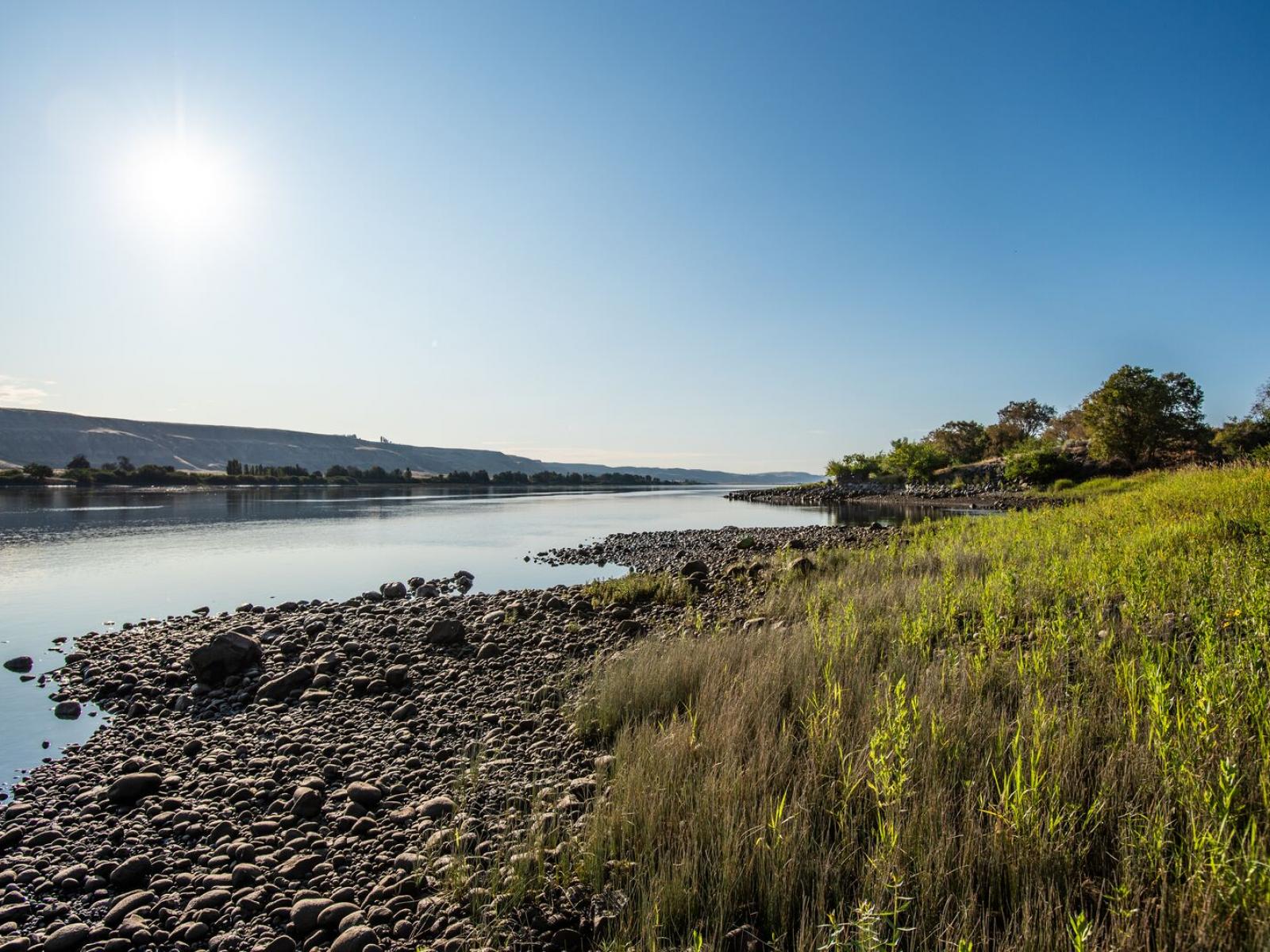Sediment Drying Triggers Complex Microbe–Environment Feedbacks

Within sediments that make up the bed of a river lies the hyporheic zone, which is a hotspot for carbon and nutrient cycling that is mediated by microbes.
(Image courtesy of Andrea Starr | Pacific Northwest National Laboratory)
The Science
Scientists want to better understand how microbes influence ecosystem function. Conceptual frameworks linking environmental microbiomes with their environment and emergent function have been proposed but remain untested. A multi-institutional team modified a recent conceptual framework for hyporheic zones that exist within riverbed sediments. Then they tested the framework with controlled laboratory experiments of wetting-drying transitions. They did this with sediment from the hyporheic zone of the Columbia River’s Hanford Reach. The results strongly supported all components of the framework and provided the most comprehensive evaluation of such a framework to date.
The Impact
These results provide a conceptual model to understand how historical drought impacts how microbes and their environment influence an ecosystem’s response to rewetting. This model is transferable across all environmental systems, providing a new opportunity to link divergent systems together under a common theory. This unification is key to incorporating additional mechanistic detail into ecosystem models.
Summary
Hyporheic zone ecosystems are areas where groundwater and surface water mix, and they are also hotspots for microbiome activity involving nutrient cycling. Physical moisture variation also modifies chemical reactions in this environment. The resulting biological and chemical dynamics can impact ecosystem function. A multi-institutional team of scientists developed and tested a conceptual framework to describe microbe–environment–ecosystem interactions in hyporheic zone ecosystems, and they evaluated their framework using controlled laboratory experiments. The team exposed hyporheic zone sediment from the Columbia River to wetting–drying transitions. Then they performed molecular analyses to determine key characteristics and conditions of their framework. Some of these experiments used instruments at the Environmental Molecular Sciences Laboratory, EMSL, a U.S. DOE Office of Science user facility located at Pacific Northwest National Laboratory. The results suggest that sediment drying initiates previously unrecognized internal feedbacks in the microbial community. These responses drive biological and chemical dynamics, and those dynamics influence microbial responses to re-wetting that depend on drying history. These results demonstrate that the impacts of disturbance can be thought of as an external forcing that triggers internal dynamics contingent on the environmental history of the system.
Funding
This work was supported by the U.S. Department of Energy, Office of Science, Biological and Environmental Research program, as part of an Early Career Award to James Stegen, and the PREMIS Initiative at Pacific Northwest National Laboratory, with funding from the Laboratory Directed Research and Development Program.
Published: January 28, 2022
Sengupta, A., Fansler, S. J., Chu, R. K., Danczak, R. E., Garayburu-Caruso, V. A., Renteria, L., Song, H.-S., Toyoda, J., Wells, J., and Stegen, J. C.: Disturbance triggers non-linear microbe–environment feedbacks, Biogeosciences, 18, 4773–4789, https://doi.org/10.5194/bg-18-4773-2021, 2021.